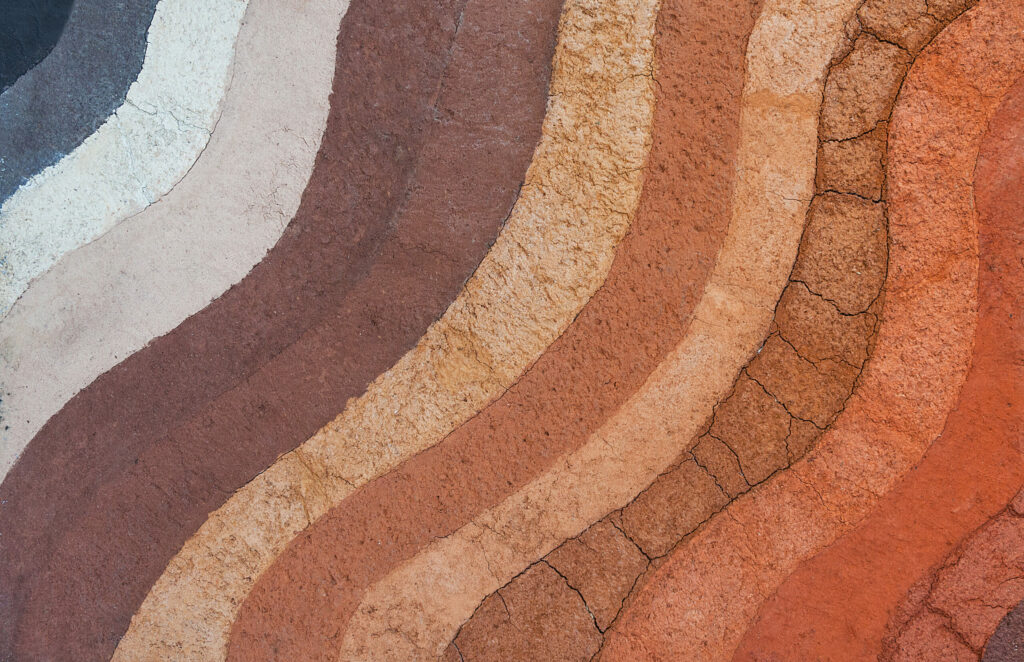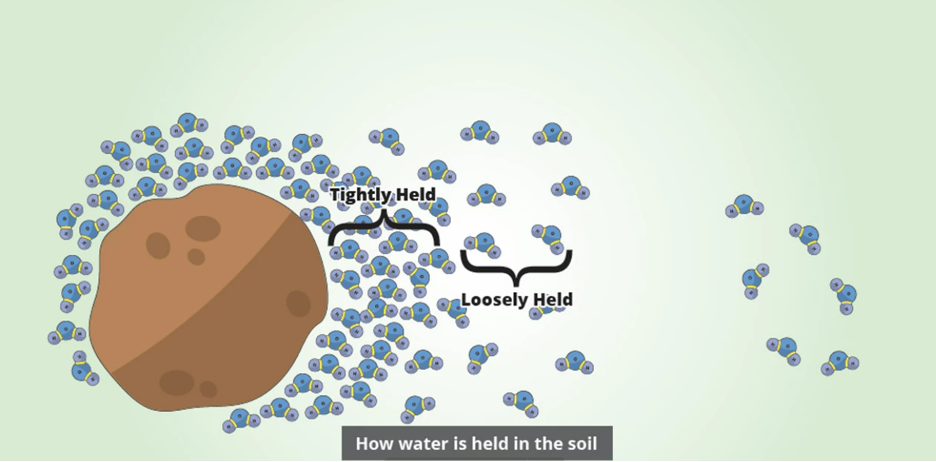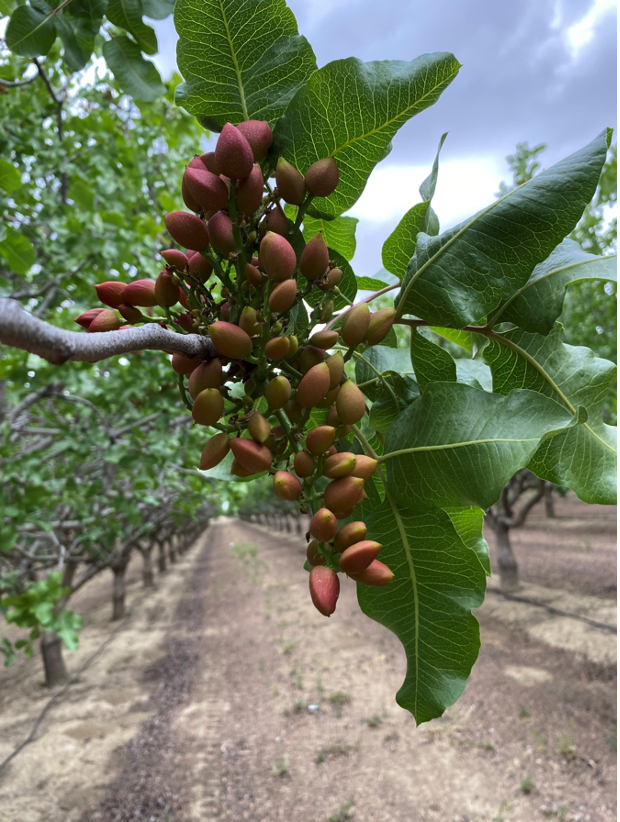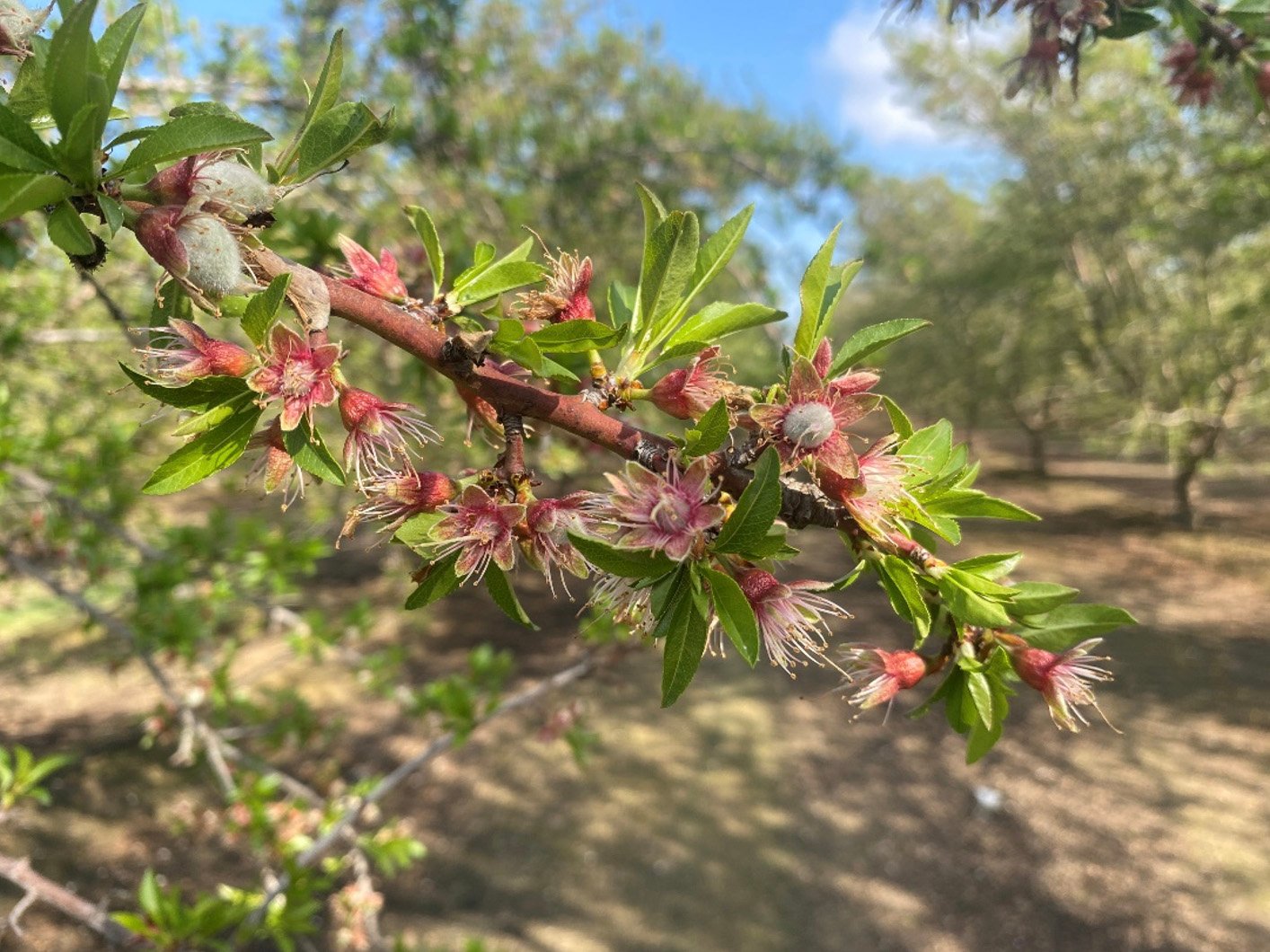
What is soil tension and how is it measured?
Soil tension is the amount of force necessary to remove a water molecule from a soil particle to allow for uptake by a plant’s root system. This force is often measured in kilopascals (kpa) or centibars (cbar). For reference, 1 kilopascal = 1 centibar = 0.01 bar. Tensiometers placed in contact with the soil measure the force required to remove water from the soil particle.
A tensiometer is a sealed probe with a ceramic porous tip on the end, which allows for the exchange of water from the porous tip to the soil. As the soil becomes drier, moisture is removed from the porous tip and taken up by the soil due to a moisture gradient. In the case of a dry soil, the soil contains less moisture than the porous tip, causing the water to move from the tensiometer into the soil. The removal of water from the polymer in the tensiometer creates a vacuum that is measured in kilopascals and is used to determine crop stress.
Hortau’s tensiometers are manufactured with a polymer gel in the porous tip to allow for higher soil tension readings. The polymer gel is capable of readings up to 1000 kilopascals, which is made possible by the substantial amount of water that can be contained by the water-retaining polymer.
Soil type and its effect on soil tension readings
Because soil tension measures the force required to remove water from a soil particle, calibration is not needed for differing soil types. Regardless of the soil being a heavy clay or a sandy loam, the tensiometer is solely focused on the force required for the plant’s roots to remove the water molecule that is adsorbed to the soil particle.
As many people know, heavy clay soils hold water tighter when compared to sandy soil. Although the two different soil types may have the same amount of moisture in the soil profile, the heavy clay is likely to show a higher kpa than the sandy soil. Since the clay is holding the water molecule tighter, due to the high surface area of clay particles, the force of the vacuum on the tensiometer will be stronger leading to higher tension readings. Much like the tensiometer, the plant also has a harder time removing water from a heavy clay particle when compared to a sand particle.
The illustration below shows how water is held by a soil particle. Clay particles will have a tighter hold on the surrounding water molecules while the sand particle will have a much larger amount of loosely held water molecules.

By being able to avoid calibration based on soil type, Hortau’s sensors are able to provide quick and reliable data to a grower. This can put to rest stress coming from not knowing how to schedule irrigations for a field with an array of different soil types. By having a tensiometer placed in one soil type it can be used as a reference point for scheduling irrigations in differing soil types if putting in additional stations is not practical for the grower.
Consideration of salts in the soil profile
Soil tension also considers soluble salts that are in the soil profile. Soluble salts can have a negative impact on the osmotic potential of the soil solution, which will lead to reduced uptake of water by plants. Simply put, when osmotic potential decreases the soil is drying out and the plants begin to experience symptoms of drought. Oppositely, when osmotic potential increases water moves into the plant due to a gradient created by excess moisture in the soil and vapor loss in the leaves of a plant.
Salt burn on almonds from a high accumulation in the soil.

Whether your soil profile is high or low in soluble salts it will not impact the accuracy of the tensiometer’s reading. The higher the salt concentration, the tighter the water will be held, resulting in a higher tension reading. With a high concentration of salts, water will be pulled back from the roots and held by the salts in the soil. With a high enough buildup of salts, it won’t matter how much water is applied, none will be taken up and the plant will die. Inversely, a lower salt concentration will allow for easier release of the water molecule from the soil profile into the root system.





